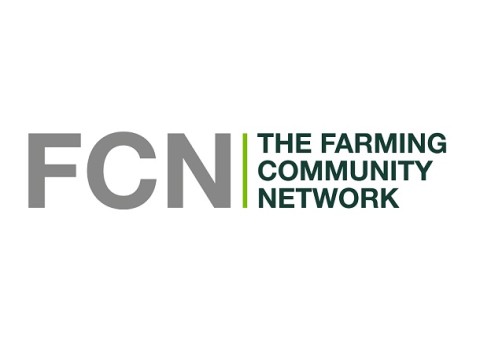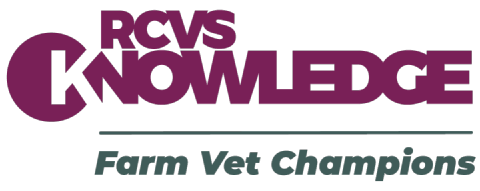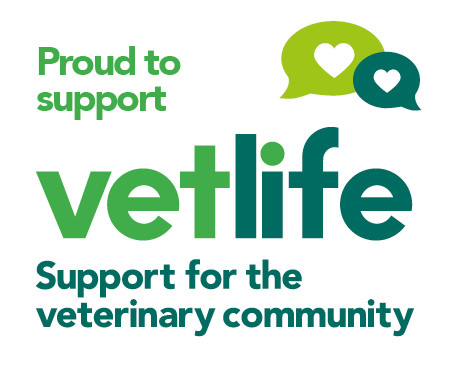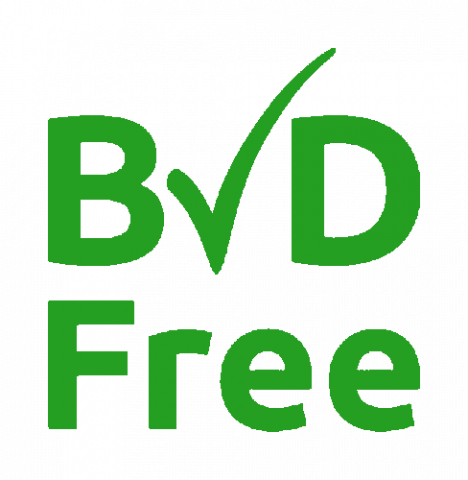Farm Vet Champions
Farm Vet Champions is a major collaborative project, led by RCVS Knowledge, to empower farm vets in a united front to tackle antimicrobial resistance (AMR). The ambition is to have a Farm Vet Champion in every veterinary practice.
When you sign up you have access to a range of invaluable resources that includes the SMART Goals Dashboard, a free, online tool is designed to help you formulate personal and team goals that are Specific, Measurable, Achievable, Realistic and Time-bound. Farm Vet Champions aims to improve responsible use of antimicrobials and safeguard their availability.
Find out more and sign up today - https://knowledge.rcvs.org.uk/quality-improvement/farm-vet-champions/
Red Tractor Farm Assurance: Summary of November 2021 Changes
Since November 1st 2021 the revised version (V5) of the Red Tractor Standards have been in place, and this will apply at our clients’ next audits. Some of the standards are new, others are new only to beef and lamb with the purpose of bringing beef and dairy standards in line with each other.
Red Tractor recommends that all stakeholders familiarise themselves with the standards which can be found on https://assurance.redtractor.org.uk.
Here is a summary of the changes most relevant to cattle vets:
The farm needs to have a written breeding and management policy in place and implemented that focuses on eliminating the routine euthanasia of calves. Dairy only
The policy must cover breeding and management decision processes to include:
Breeding
- semen use/breeding management decisions
- tools used to determine replacement rates etc (can be N/A if true flying herd)
Management
- provision of rearing facilities to cover the number of youngstock (see appendix how calculation should be undertaken. You must provide calving pattern provision for 100% of expected births over a 10-day period)
- identified market for breed of calf produced
- provision/plan for TB breakdown
Evidence that the breeding and management policy is implemented on-farm
Annual collation of calf births/deaths must be maintained. Dairy
Annual figures to be entered into yearly vet review.
- number of cows calved
- number of calves born dead or die <24 hours old
- number of calves die >24 hours and <42 days old
- number of calves sold off farm <42 days old (including those under TB orders)
Trends to be observed and actions arising noted in health plan.
Housing must be constructed and maintained to provide a safe and secure environment for livestock. The farm must be aware of outcome measures relating to hair loss, lesions, swelling, cleanliness, body condition score and lameness. Dairy:
No unmanaged welfare outcomes in relation to
- hair loss, lesions and swelling
- cleanliness
- lying comfort
- housing size
- welfare outcome scoring
- Body Condition Score of milking herd
Beef and Lamb:
Any health or welfare issues have been detected and are being managed.
The nominated vet must review, sign and date the Health Plan.
The vet must sign, date and review the health plan every year. In addition, the vet’s annual Health and Performance review should now document key issues and what actions to take to reduce or control them. The health plan should be easily accessible to everyone involved in the care and management of the stock.
Beef and Lamb:
Health and performance data: lameness, mortality records, culling rate (and reasons), disease, parasites, abattoir feedback, consider industry initiatives e.g. BVDFree England.
Medicine usage data: medicine administration records, medicine collation, antibiotic collation, review HP-CIA use, prophylactic treatments, review cascade use. Make recommendations for alternative strategies and reduction where possible.
The review is signed and dated by the nominated vet/ or vet from the nominated vet practice with recommendations for any updates to the Health Plan if required.
Dairy:
Health and performance data: lameness (clinical cases, non-routine trimmings and treatments), mortality records (for all classes of stock), culling records and reasons for culling (planned culls sent to abattoir that would not show as on- farm deaths or TB reactors), involuntary culls (excluding TB reactors), mastitis (clinical cases, treatments, cell counts), disease, parasites, consider industry initiatives e.g. BVD Free England.
Medicine usage data: medicine administration records, medicine collation, antibiotic collation, review HP-CIA use, prophylactic treatments, review cascade use. Make recommendations for alternative strategies and reduction where possible.
The review is signed and dated by the nominated vet or vet from the nominated vet practice with recommendations for any updates to the Health Plan if required.
Health Plans must detail how BVD is managed.
This must be documented in the health plan and implemented. For example, you may be in a national scheme or doing regular testing. Management of a breeding herd may include: vaccination, tag and test all calves, blood sampling to determine status of herd, milk sampling to determine presence of disease and removal of PI animals from the herd. For beef herds, this is a recommendation which will become a full standard in October 2022.
The nominated vet/vet practice must have visited the farm at least once in the past year.
This revision, ensuring that a member’s vet visits the farm at least once a year to see the livestock, makes it clearer that the vet has professional oversight of the farm.
At least one person who is responsible for administering medicines on farm must have a certificate of competence/attendance from training undertaken since October 2016. (New for Beef and Lamb)
At least one person must have done recent (after October 2016) medicine training. Approved medicines courses include MilkSure, NOAH Animal Medicines Best Practice, or a vet practice course which must cover the necessary components and be approved by Red Tractor. This will increase awareness, knowledge and understanding of antimicrobial resistance and encourage consistent best practice across UK farms. It also supports Responsible Use of Medicines in Agriculture Alliance targets. Training courses must cover at least: medicine types, medicine handling, administration, medicine storage, recording requirements and avoiding residues.
No electric goads or electrified backing gates are to be used. Read and understand Red Tractor’s appendix defining unacceptable behaviour with regards to livestock handling.
The way members move and handle livestock is crucial for both welfare and the industry’s reputation. Stress and poor handling do not just affect the welfare of the stock and staff; they also reduce returns by impairing carcase quality of the meat. Motorised backing gates are common in collecting yards outside milking parlour entrances and some are designed to administer an electric shock if an animal touches them. However, there are concerns about their use as they are not in the direct control of someone who can use discretion. For this reason, electrified backing gates can no longer be used on a Red Tractor dairy farm.
There is also a new appendix which explicitly sets out Red Tractor’s expectations as to what is and is not acceptable livestock handling. It is not permitted to strike or kick any animal; apply pressure to any particularly sensitive part of the body in such a way as to cause pain or suffering; lift or drag in any way that may cause pain or suffering; use prods or other implements with pointed ends; twist, crush or break the tails of animals or grasp the eyes of any animal; throw or drop animals.
Tethered housing systems will start to be phased out from 1 November.
In the short-term, Red Tractor may offer derogations to the small number of members who tether their cattle. There is a need to find out how many farmers will be affected, why this practice is used and whether systems can be changed. Tethering or restraining cattle for any other purpose will still be permitted, including for showing, milking and veterinary procedures. Tethering at shows is allowed because this is temporary, and cattle are under the care of a duty vet for the duration.
Veterinary medicines must be used appropriately: Antibiotic footbaths must not be used in milking stock Dairy
Antibiotics used on the farm in the past year need to be collated so that vets can give advice. (New for Beef and Lamb)
Products collated by product name either by vet from prescription data or completed by farmer from medicine records.
Analgesia is required to manage the pain associated with husbandry procedures.
It is recognised that in the interest of animal welfare, human health and safety, and farm business viability that it will not be possible to replace, or reduce, the need for some routine husbandry procedures on calves. However, animal welfare is a core principle of Red Tractor and so analgesia is required to manage the pain associated with disbudding, dehorning, castration and the removal of super-numerary teats. In recognition of the differences in handing practices and breeds, this is a full standard for dairy and a recommendation in beef animals.
Husbandry procedures, analgesic & anaesthetic

REMINDER
Vets play an important role in upholding the Red Tractor scheme, and the wider industry’s reputation. If you encounter any issues around compliance with Red Tractor standards or the law, the most effective way to raise a concern is with a member of the Red Tractor Team directly using the details below. If you wish to report a concern anonymously, please use the independent confidential ‘TELL US’ web reporting service by visiting safecall.co.uk/RT.






